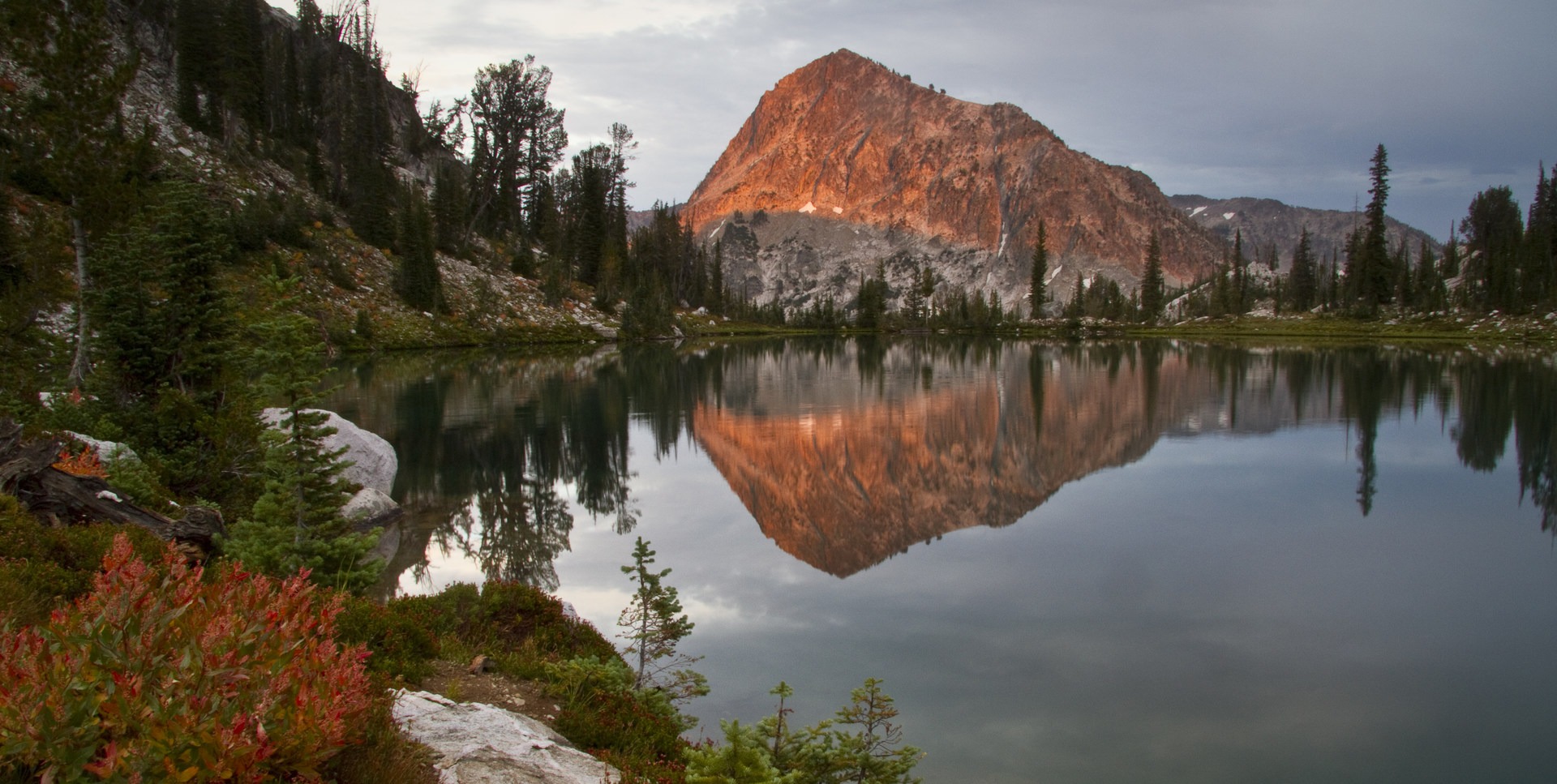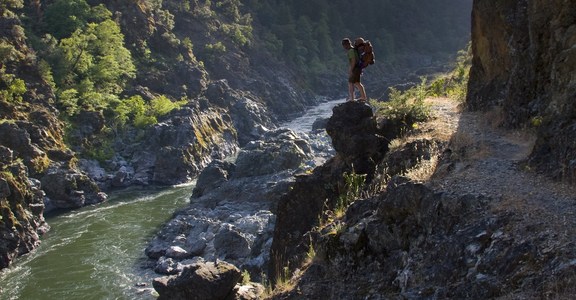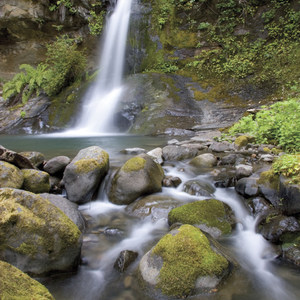The access to the upper Queens River basin is via the lower Queens River Trail. Also, check out the Atlanta overview for more information about the region. Note that the Queens and Little Queens drainages burned significantly in 2013. Expect to encounter charred forest, downed trees, altered description, and other effects from the fire.
Lake 8,696, Everly Divide, and Queens River Divide
The upper half of Queens River feels just as deep and confining as the lower canyon. The impressive ridgeline that contains Nahneke Mountain, Flat Top Mountain, and Browns Peak remains tantalizingly out of view from the bottom of the canyon. The trail crosses more sloping fans and accumulated piedmonts that fill the valley. There are several stretches of pleasant hiking along the trail sandwiched between these fans and the now diminished creek.
There are a few small waterfalls in the creek, though most are not visible from the trail. There are a handful of locations for small camps in this upper half of the canyon. Two additional sites are found at the upper two Queens River crossings as the trail climbs toward the Everly divide. Near the head of the canyon around 7,900 feet, the trail passes through a small burn from the Everly Fire in 2007.
Hiking distances and ascents are as follows:
• From the Queens River Trailhead to Lake 8,696: 12.8 miles, 3,752 feet.
• From the Queens River Trailhead to the Everly Divide: 12.7 miles, 3,632 feet.
• From the Queens River Trailhead to the Queens River Divide: 13.6 miles 4,294 feet.
Additional Adventures
From the headwaters of Queens River the trail splits and continues over the Queens River Divide to Arrowhead and Pats Lakes and over the Everly Divide to Everly and Plummer Lakes in the South Fork of the Payette River.
Mountain Biking
There is a mountain bike loop before the Queens River Trailhead that follows old mining roads to Atlanta. For more information, check out the China Basin Road adventure.
Off-Trail Hiking
There are many small lakes that populate the hanging basins above the upper half of the Queens River canyon. Though the access is steep, these can all be reached via reasonable routes up subtle ridges and terrain features from the valley floor. The routes are best scouted by using Google Earth.
There are two peaks that can be climbed from the Queens River canyon. The first is Blizzard Mountain, the long northwest ridge of which can be reached after a 1,000-foot climb up the left side of Nanny Creek. There are a few rock features along the ridge that can be skirted by staying on the west face. This ridge can also be descended after completing the Greylock to Blizzard traverse from the China Basin Trail. The Nanny Creek drainage also offers an off-trail route to Rock Creek that facilitates a loop between Queens River and the Middle Fork of the Boise River. Further up the canyon, a circuitous route follows a series of ramps and subtle ridges up the east ridge of Browns Peak.
Technical Climbing
The Upper Queens River drainage is underlain by the Sawtooth Batholith, but there are only a handful of features that look enticing for rock climbers. The first is a short wall south of Cliff and Slide lakes that may have a few routes ranging from 1 to 3 pitches. A dike couloir on the southeast buttress of Browns Peak may hold enough snow for a spring snow climb. There are a few additional features on the west side of the trail beneath Mount Everly that look interesting. The sloping face closest to the Everly divide has the most prominent crack systems.
Wilderness Regulations
Most of the trail lies within the Sawtooth Wilderness. Please observe the following regulations:
• Mountain bikes are not allowed past the wilderness boundary.
• Self administered wilderness permits are required and available at the trailhead.
• Dogs must be on a leash between July 1 and Labor Day.
• Camp 100 feet from trails, lakes and streams.
• Pack out all garbage.
• Human waste should be buried and well disguised in a cat hole that is 6 to 8 inches deep. Pack out all toilet paper.
• Campfires allowed ONLY in a backcountry pan or fire blanket.
• Campfires are NOT allowed at some lakes and in some drainages in the Sawtooths. Please review the campfire restrictions at individual trailheads.
• Permits required for all stock use in the wilderness. No grazing allowed in the Salmon River watershed (This includes the Alpine Lake drainage).
• No equine stock at Edith Lake. ALL stock prohibited in the Goat Creek and Alpine Creek (Alturas Lake) drainages.
Reference: All content excerpted from Exploring the Sawtooths - A Comprehensive Guide by Idaho River Publications.
Logistics + Planning
Current Weather: Powered by Dark Sky







Preferable season(s)
Congestion
Parking Pass
Pros
Cons
Trailhead Elevation
Features
Suitable for
Our mission is to inspire adventure with beautiful, comprehensive and waterproof map-based guidebooks. Owner, publisher, and photographer Matt Leidecker, grew up exploring and guiding on the rivers in central Idaho. His award winning Middle Fork of the Salmon River – A Comprehensive Guide is the standard by which other river guidebooks are measured. Printed on virtually indestructible YUPO paper, IRP guides are truly unique all-in-one resources for adventure. Each book is loaded with full-color maps, stunning photographs, and information on the history, geology, and wildflowers. Visit Idaho River Publications to explore our guidebooks to the Rogue River in Oregon and the mountains of Central Idaho.


















Comments
Sign In and share them.